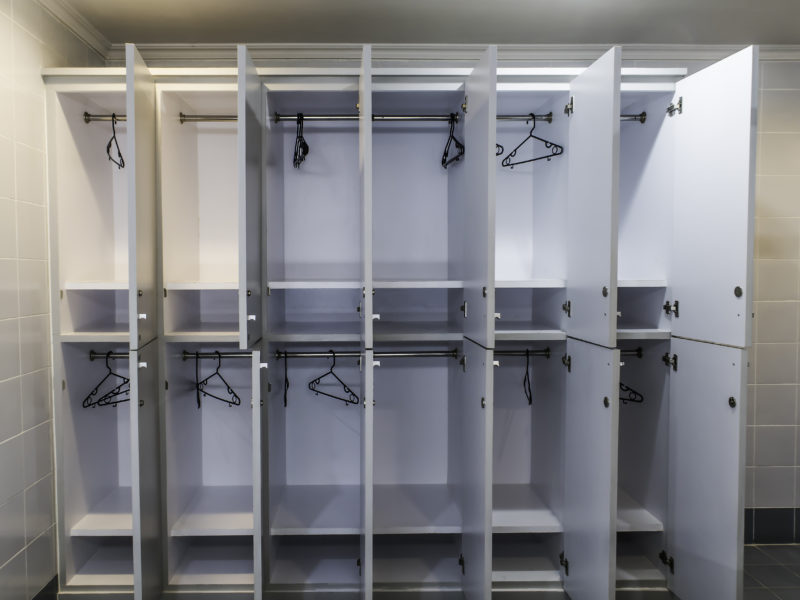
Pandemic-related supply chain issues continue to cause a shortage of athletic gear and equipment for some high school teams, according to sources, who say they aren’t positive about whether the situation will change that much this year.
With spring approaching, for instance, gear like body pads, baseball and softball gloves, helmets, cleats used for baseball, softball, soccer, and other sports, and even tennis balls are in short supply, among other items.
“We have had some uniform issues, and sometimes had problems getting the correct colors for our spirit gear. We also have had a few parts to our scoreboard delayed because of the supply chain,” said Erich Frombach, the Avon High School athletic director in Avon, Ohio. “We also had problems with tennis balls last spring.”
This year, Frombach said that the Avon High School Eagles also continue to need balls, uniforms, spirit gear, and other equipment.
“It really has not gotten better or worse. We do wonder if we will get our stuff in time,” said Frombach. “It has forced us to order items earlier than we normally do to try to give us the best chance of getting it.”
The big concerns last year were uniform delivery, football helmets, tennis balls, and softballs, said Becky Moran, assistant executive director at the National Interscholastic Athletic Administrators Association and a former athletic director in Illinois.
“The supply chain issues can be quite impactful to school programming,” Moran said. “I know of schools and youth programs that have had to reach out to other schools and programs to find enough safety equipment to keep their athletes safe.”
Additionally, Moran said that school budget cycles don’t allow for earlier ordering in some situations, leaving programs waiting on needed equipment to provide an excellent experience for student athletes.
“Couple that with some things taking longer than expected and it leaves programs in a tough spot,” she said. “Schools in lower socioeconomic areas may not have the finances to order new equipment annually, leaving them in an even worse situation when things do not arrive in the timeframe they used to be able to rely on.”
Supply chain issues in the sports gear industry have varied by category and supplier, according to Jerry Herrick, Managing Partner for the Mickelson Agency, Inc., a marketing consultant firm in Galena, Ohio, and managing partner of the Mickelson Agency Inc., which provides services in the sporting goods field.
“In some cases and categories, there’s been a very serious disruption,” he said. “Hardgoods in general and cleated footwear are currently taking the biggest hit.”
Overall, though, Herrick says that the industry hasn’t seen a significant decline due to the ability of dealers to adjust to suppliers with better inventories.
For instance, he said “much of what was not supplied by some hardgoods vendors last summer is now on the shelf and able to be shipped in a timely manner.”
Danny Chalhoub, director of school partnerships and team apparel at DistrictWON, said that the supply chain issues have had a huge impact on purchases, especially for schools that order the bigger name brands like Nike, Under Armour, and Adidas, for example.
“Even pre-Covid, schools have had issues receiving orders on time when ordering those brands,” Chalhoub said in an interview. “As you can imagine, not receiving uniforms prior to a season creates a big problem, which is the harshest negative outcome that the supply chain issue has created.”
Because the type of gear needed changes season to season, Chalhoub explained that every year, there’s a constant demand for coaching and practice gear because those are items needed annually.
“Most schools are on four or five-year cycles with team uniforms, but there is also good demand for that each year because schools are supporting up to 40-60 teams for both boys and girls each year,” he said. “Additionally, there are the middle school programs that need support.”
And while Chalhoub thinks the supply chain issues could improve this year as the world rebounds from the COVID-19 pandemic, he also thinks that the past three years really forced schools to make different purchasing choices.
For example, schools now might consider buying different brands than the well-known brands because they may have provided better service during the height of the pandemic — particularly when it came to delivering uniforms on time.
“I also think it opened schools’ eyes regarding the high quality of the lesser known brands,” he said. “The general feedback has been that the team gear and uniforms provided by those lesser known brands is just as good as anything else on the market.”
So, as bad as the pandemic was on the supply chain, Chalhoub said it was also a big learning moment for schools. “We will see if there is a shift toward products and supply chains that performed better over these past few years,” he said. “I think it will, and we will see as purchasing begins for the 2023-2024 academic year.”